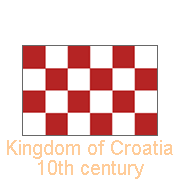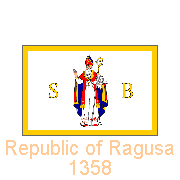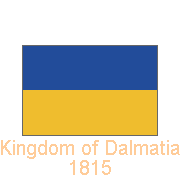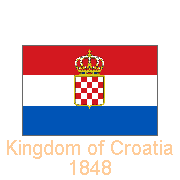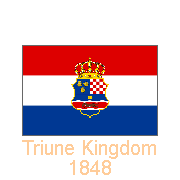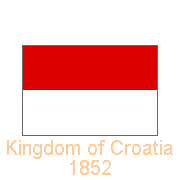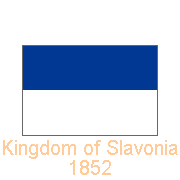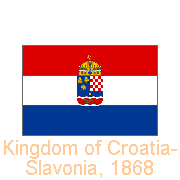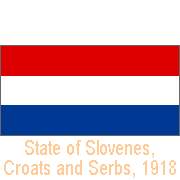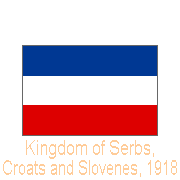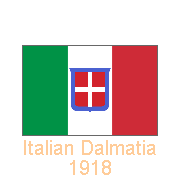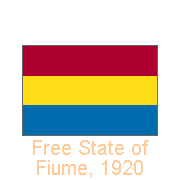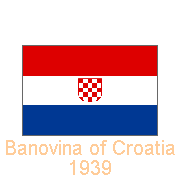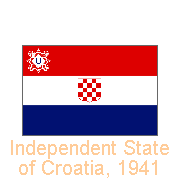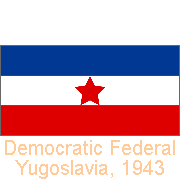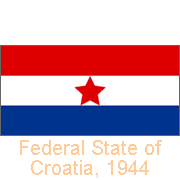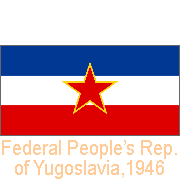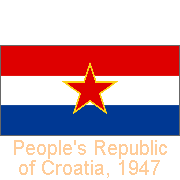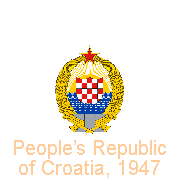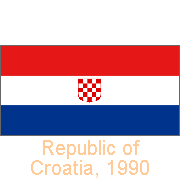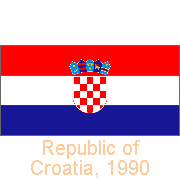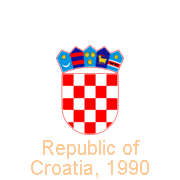Flags from Croatia
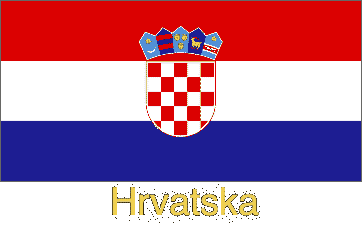
A Flag history of Croatia
Croatia's traditional red and white checkerboard design (chequy) is historically traced to the arms of King Stephen Držislav, who ruled from 969 CE until his death around 997. By legend, it is said that he was captured by the Venetians and played a chess match against Doge Pietro II Orseolo. He won all three games and gained freedom, incorporating the red checkerboard into the Croatian coat of arms. The design appeared again in 1848 when the Kingdom of Croatia displayed it on a red-white-blue flag during the Hungarian Revolution when they demanded the unification of the three Croatian kingdoms (Croatia, Slavonia and Dalmatia).
you may then send it as a postcard if you wish.
The flag's colours seemed a combination of those of Croatia (red-white) and Slavonia (blue-white), the (also Croat-speaking region) to its east. Although Dalmatia was excluded - it remained a separate Austrian Crown Land - the united Kingdom of Croatia-Slavonia, established in 1868, the Dalmatian Coat of Arms also appeared on its flag. After the First World War, Croatia joined the other Slavs in the south of the now-abolished Austrian-Hungarian monarchy with the Kingdoms of Serbia and Montenegro in 1918: the Kingdom of Serbs, Croats and Slovenes, later renamed Yugoslavia.
During the Second World War, Yugoslavia was occupied by Axis powers and a Croatian fascist and ultranationalist organisation, Ustaša, proclaimed an "Independent State of Croatia". It collaborated with the Nazis, raising the red-white-blue flag with the checkerboard shield and the Ustaša symbol, a "U" in an ornamental border at the upper hoist. The regime was eventually defeated by Tito's Partisans, who in 1943 had proclaimed a "Democratic Federal Yugoslavia". In 1945 Croatia became part of the Federal People's Republic of Yugoslavia; the flag of the People's (later Socialist) Republic of Croatia became the red-white-blue Croatian tricolour with a gold-bordered red star in the centre.
Yugoslavia disintegrated in 1990, and Croatia proclaimed its independence on 25 June 1991. Ten months earlier, the Republic of Croatia had adopted its new flag: the red-white-blue tricolour with the traditional checkerboard shield (chequy) with 13 red and 12 white fields with a crown made of shields of its various regions. From left to right are the ancient arms of Croatia, Dubrovnik (Ragusa), Dalmatia, Istria and Slavonia. Most of these, however, differ slightly, in colour and design, from the historically accurate versions.


